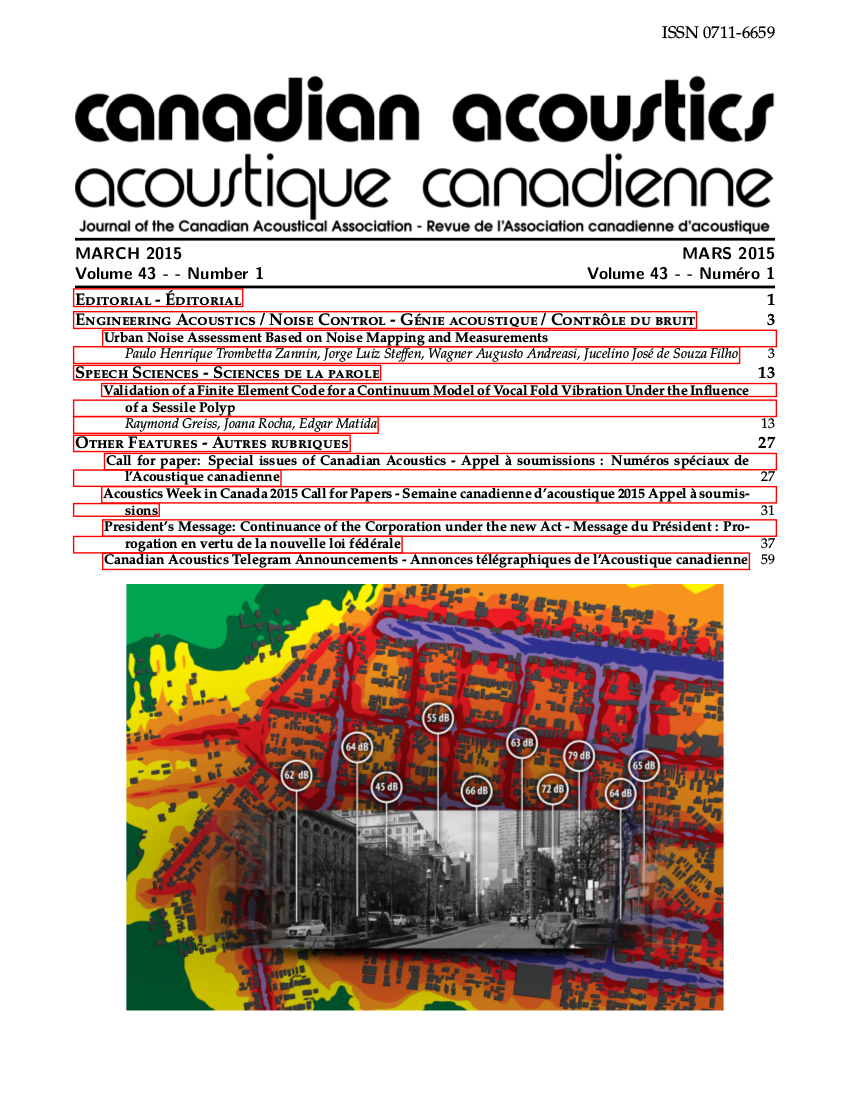Validation of a Finite Element Code for a Continuum Model of Vocal Fold Vibration Under the Influence of a Sessile Polyp
Keywords:
Vocal fold, Polyps, Structural vibration, Finite element methodAbstract
Vocal fold vibration has been extensively investigated using numerical simulation through the use of lumped element models, and more recently, through the use of finite element continuum models. Finite element models offer the ability to analyze the effects of detailed and complex geometric models, allowing for the study of the influence of pathologies and phonosurgery on the process of phonation. The present study details the development of a finite element code of vocal fold vibration and a continuum model of a vocal fold with a sessile polyp. The capability of the code to capture major structural vibration trends are illustrated through a validation process, wherein previously explored models are replicated, and computed results are sub- sequently compared to gauge the code’s efficacy. An overview of literature pertinent to the modeling of vocal fold polyps is presented, followed by the discussion of the creation of a continuum model of a vocal fold affected by a sessile polyp. This pathological model is parameterized according to the size and position of the polyp, and trends are explored based on varying these parameters. Polyp size is concluded to have a more profound influence on the fundamental frequency of vibration than position. An inversely proportional relationship is found between polyp size and fundamental frequency, as well as proximity to the anterior-posterior surface and fundamental frequency.
Additional Files
Published
How to Cite
Issue
Section
License
Author Licensing Addendum
This Licensing Addendum ("Addendum") is entered into between the undersigned Author(s) and Canadian Acoustics journal published by the Canadian Acoustical Association (hereinafter referred to as the "Publisher"). The Author(s) and the Publisher agree as follows:
-
Retained Rights: The Author(s) retain(s) the following rights:
- The right to reproduce, distribute, and publicly display the Work on the Author's personal website or the website of the Author's institution.
- The right to use the Work in the Author's teaching activities and presentations.
- The right to include the Work in a compilation for the Author's personal use, not for sale.
-
Grant of License: The Author(s) grant(s) to the Publisher a worldwide exclusive license to publish, reproduce, distribute, and display the Work in Canadian Acoustics and any other formats and media deemed appropriate by the Publisher.
-
Attribution: The Publisher agrees to include proper attribution to the Author(s) in all publications and reproductions of the Work.
-
No Conflict: This Addendum is intended to be in harmony with, and not in conflict with, the terms and conditions of the original agreement entered into between the Author(s) and the Publisher.
-
Copyright Clause: Copyright on articles is held by the Author(s). The corresponding Author has the right to grant on behalf of all Authors and does grant on behalf of all Authors, a worldwide exclusive license to the Publisher and its licensees in perpetuity, in all forms, formats, and media (whether known now or created in the future), including but not limited to the rights to publish, reproduce, distribute, display, store, translate, create adaptations, reprints, include within collections, and create summaries, extracts, and/or abstracts of the Contribution.


